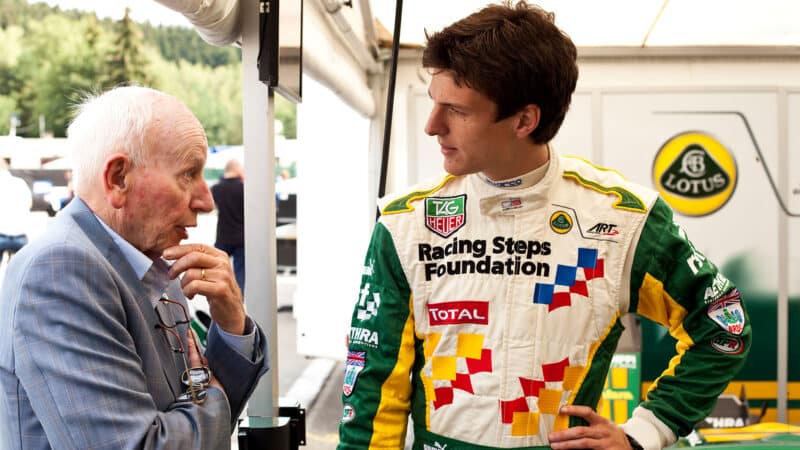“He said the good thing about Ferrari is they always treat the sports cars the same and they’re as passionate as the F1 guys.
“He said not to upset them! You’ll be under a lot of pressure because it’s Ferrari, but that it’s a good place, and told me to enjoy it. It’s a nice little fact to be in line with him as two champions.”
Il Grande John, still the only man to become a world champion on two wheels and four, was known for often being as uncompromising off-track as he was on it, something also shared with Calado.
Being interviewed in the chill of the famous Shell garage at Ferrari’s private Fiorano test track, the sports car veteran’s got a bone to pick…
Calado has been unimpressed with the metaphorical tumbleweed from the British press that greeted his world championship triumph. He says he hasn’t conducted a single interview with a media outlet from his home nation since securing the title.

Surtees, seen here with Calado in 2011, was Ferrari’s last British overall world champion
“I was surprised,” he growls. “I got home, and there was nothing, so strange.”
In contrast Calado has described the Tifosi’s reaction to Ferrari clinching a championship as “crazy” and says the cumulative effect of being a longtime Cavallino works driver has made Italy feel more like home than the UK.
Focusing on the positives, Calado’s Hypercar championship is a crowning glory on a brilliant endurance career which is still in full flow.
The Brit had already won WEC’s LMGTE Pro category three times in 2017, 2021 and 2022, before he and his team-mates took a sensational Le Mans win in the 2023 debut season of its 499P Hypercar – 50 years after it left the top tier of sports car racing.







